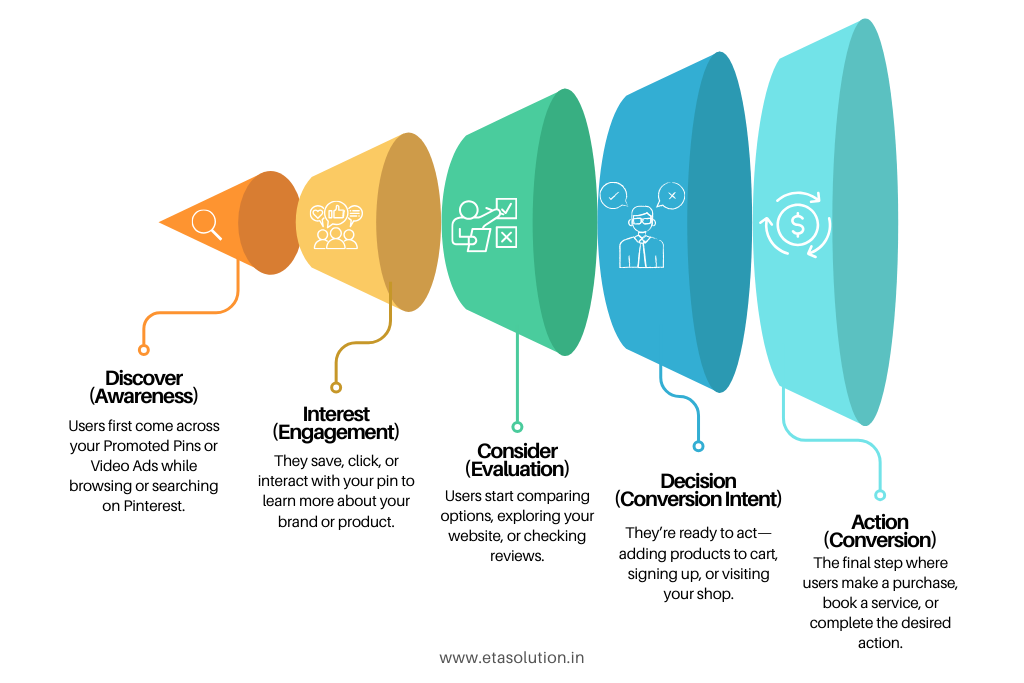
What Are Pinterest Ads and How Do They Work? | Complete Guide
When brands talk about getting results from ads, they often start by talking about Google or Facebook. But there’s a big player that’s quieter, shaping how millions of buyers find products each month: Pinterest. Over 498 million people actively use Pinterest globally, and what sets them apart is intent. Unlike Instagram scrollers, Pinterest users are planners. They arrive with an idea, a goal, and often a purchase in mind. For a performance marketing company, or anywhere else for that matter, ignoring Pinterest means leaving serious traffic and conversions on the table.
Let’s dive into how Pinterest ads work, looking at styles, who to aim at, how bids run, and pro tips to get ahead.
Pinterest Ads Funnel in 5 Steps

Getting Into Pinterest Ads: An Easy Guide for Beginners
Pinterest ads act like other pins, but firms pay to get them seen by more people in their feed and when they search. These ads mix well with normal posts, so they aren’t too loud and help users find new things. A Pinterest ad isn’t too bold; it helps folks who are already looking, saving, or planning to shop.
For people selling things, this means Pinterest is more than just a place to post. It is a visual search advertising engine where intent-driven users meet targeted brand messages.
Different Types of Pinterest Ads You Can Run
Pinterest ad formats are designed to be native and immersive. The key ones include:
- Common Pins: Easy, still ads that look like any other pin but show up in more spots.
- Video Pins: Short videos that play by themselves to grab your eye fast.
- Carousel Ads: Many pictures in one pin, where you can swipe, good for sharing stories or showing off many products.
- Shopping Ads: Direct links to products that make selling on Pinterest work well
- Collection Ads: A main image with other pictures that help find more products.
The key thing here is how it fits. From what Pinterest says, people are 2.6 times more likely to buy something after seeing a brand’s stuff on Pinterest than on other sites.
How Pinterest Ads Appear in Users’ Feeds and Search
Pinterest ads can surface in two powerful ways:
- Home feed: Where users see a mix of organic pins and promoted pins aligned to their interests.
- Search results: This is where Pinterest ads shine. If someone searches “modern kitchen ideas,” promoted pins from relevant brands appear right beside organic results.
This search-like visibility makes Pinterest closer to Google Ads than Instagram. And that’s why many marketers call it the “hidden gem of PPC.”
Setting Up a Pinterest Business Account for Advertising
To run ads, you need a Pinterest business account. It unlocks tools like audience insights, ad manager, and analytics. The steps are straightforward:
- Convert a personal account or create a new business account.
- Claim your website to get data-rich analytics.
- Install the Pinterest Tag to track conversions.
Pinterest favors businesses that build organic presence first. Accounts that pin consistently often see stronger ad delivery performance later.
Pinterest Ad Choices: Likes, Words, and People Groups
Pinterest pairing mixes finding with exactness:
- Likes choice: Ads find users who like things such as style, trips, or home looks.
- Word choice: Ads show up in searches linked to what users type. This makes Pinterest ads strong for sure-goal plans.
- People lists: Made from buyer lists, site guests, or interaction info.
- Similar people: Pinterest’s take on matching types, growing the ad’s touch to folks acting alike.
Unlike other platforms, Pinterest ad targeting is deeply integrated with planning behavior. For example, a furniture brand can target “new home buyers” months before they actually purchase.
How the Pinterest Ads Auction and Bidding System Works
Like most PPC systems, Pinterest uses an auction model. But there are differences marketers often miss:
- Advertisers set bids (CPM, CPC, or CPA).
- Pinterest evaluates not just the bid but also ad relevance and quality.
- High-quality pins with strong engagement can win auctions at lower costs.
Unlike Facebook, where hyper-personalization dominates, Pinterest’s algorithm heavily prioritizes visual quality. Poor creatives lose auctions regardless of bid.
Creating High-Performing Pins for Ad Campaigns
Pins are not just images. They’re micro-sales pitches. To maximize performance:
- Use vertical formats for better visibility.
- Overlay text that communicates value instantly.
- Add branding subtly but clearly.
- Leverage lifestyle imagery, Pinterest thrives on aspiration, not stock product shots.
- Keep videos from 6 to 15 seconds for better hold.
Levi’s made a custom shop effort on Pinterest and got hold rates twice as high as what most see. This was mainly because they used AI to give product tips that fit what users liked.
Budgeting and Scheduling Your Pinterest Ads
Pinterest allows both daily and lifetime budgets. The choice depends on campaign goals:
- Daily budget: Good for consistent exposure.
- Lifetime budget: Best for short-term, time-bound campaigns.
Pinterest ads perform strongest during seasonal peaks. Planning budgets around these cycles, like back-to-school or holiday shopping, multiplies returns. This makes Pinterest a reliable Pinterest traffic strategy when timed right.
Tracking Performance with Pinterest Analytics
The analytics dashboard offers visibility into:
- Impressions, clicks, and saves.
- Conversion tracking with Pinterest Tag.
- Path-to-purchase insights.
Interestingly, Pinterest also shows saves as a key metric. A saved pin is often a future purchase signal. This long-term funnel view is something Facebook and TikTok don’t emphasize.
Pinterest Ads vs Other Platforms: What Makes Them Unique?
While Google captures immediate search and Facebook dominates social proof, Pinterest is where ideas turn into plans.
- Google is about “now.”
- Facebook is about “friends.”
- Pinterest is about “what’s next.”
That future-focused planning mindset is why brands like Ikea and Home Depot invest heavily here. Pinterest’s strength lies in reaching users at the pre-purchase stage, which is rare among digital platforms.
And that’s why many in the Pinterest marketing space are calling it the new frontier for Pinterest for ecommerce growth.
The Strategic Edge for a Performance Marketing Company in Ahmedabad
For agencies and consultants, mastering Pinterest means opening new revenue pipelines for clients. Fashion, food, lifestyle, and home brands need to use Pinterest in their mix.
As more brands come in, the real question is not if you should use Pinterest, but if you are okay with losing the first-mover gain before others fill up the space.
Final Take
Pinterest is no longer just a mood-board platform; it’s a Pinterest ppc powerhouse where intent meets discovery. From diverse Pinterest ad formats to powerful targeting and long-funnel conversion tracking, the opportunities are immense. For a Marketing Firm in Ahmedabad, using Pinterest now could get you a lead in the market later.
The key point is this: As all fight for room in full ad spots on Google and Facebook, Pinterest is still cheap and not much used. So, do you wait for your rivals to step in first, or do you start setting up your Pinterest ad plan right now?
Pinterest offers a variety of ad formats to suit different business goals, including Standard Image Ads, Video Ads, Carousel Ads, Shopping Ads, and Idea Pins. Standard and Video Ads are designed to capture attention with visually appealing content, while Carousel Ads allow businesses to showcase multiple products or features in a single ad. Shopping Ads integrate directly with product catalogs, making it easier for users to purchase, and Idea Pins are effective for storytelling and driving engagement. Each format serves a unique purpose, giving advertisers flexibility in their campaigns.
The cost of Pinterest Ads depends on factors such as the campaign objective, targeting options, bidding strategy, and competition. On average, businesses can expect to pay between $0.10 and $1.50 per click, while impression-based campaigns typically cost $2 to $5 per 1,000 impressions (CPM). Pinterest uses an auction system, meaning advertisers set their budgets and bids, ensuring costs remain flexible and scalable based on individual goals.
Pinterest’s Conversion Tag is a tracking tool that helps advertisers measure the actions users take on their website after interacting with an ad. By installing this code snippet on a website, businesses can track conversions such as sign-ups, purchases, or add-to-cart actions. This data is essential for optimizing campaigns, improving targeting accuracy, and calculating return on investment (ROI). The Conversion Tag ensures that advertisers have a clear understanding of how their Pinterest campaigns influence business outcomes.
While it is technically possible to run Pinterest Ads without a website by promoting content directly on the platform, having a dedicated website or landing page significantly enhances the effectiveness of campaigns. A website allows businesses to drive traffic, capture leads, and convert Pinterest users into paying customers. Without a website, advertisers miss the opportunity to measure detailed conversions and build long-term customer relationships, making it less efficient for most marketing strategies.
Yes, Pinterest Ads support retargeting, enabling advertisers to reach users who have previously engaged with their pins, visited their website, or are similar to their existing audience. This feature allows businesses to re-engage warm leads and encourage them to take the next step, such as making a purchase or signing up. Retargeting campaigns are highly effective because they focus on audiences that have already shown interest, thereby increasing the chances of conversion while lowering overall acquisition costs.

What started as a passion for marketing years ago turned into a purposeful journey of helping businesses communicate in a way that truly connects. I’m Heta Dave, the Founder & CEO of Eta Marketing Solution! With a sharp focus on strategy and human-first marketing, I closely work with brands to help them stand out of the crowd and create something that lasts, not just in visibility, but in impact!

Performance Max vs. Manual Campaigns: What Works Best

Social Engine Optimization: Win the Social Search Game


